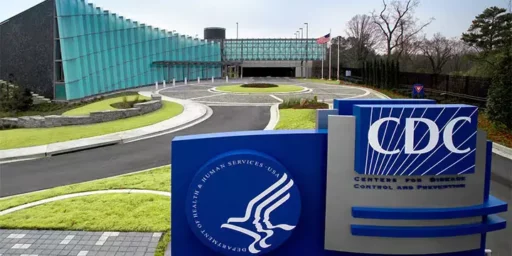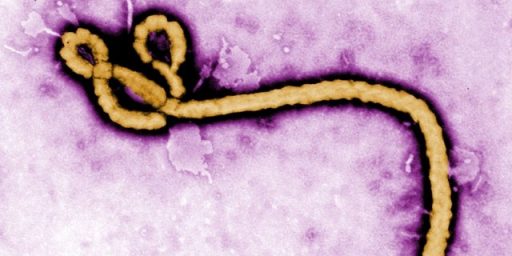Morgellons Disease
A strange and controversial disease is spreading throughout South Texas, reports Deborah Knapp of San Antonio’s KENS 5 Eyewitness News.
If diseases like AIDS and bird flu scare you, wait until you hear what’s next. Doctors are trying to find out what is causing a bizarre and mysterious infection that’s surfaced in South Texas.
Morgellons disease is not yet known to kill, but if you were to get it, you might wish you were dead, as the symptoms are horrible. “These people will have like beads of sweat but it’s black, black and tarry,” said Ginger Savely, a nurse practioner in Austin who treats a majority of these patients. Patients get lesions that never heal. “Sometimes little black specks that come out of the lesions and sometimes little fibers,” said Stephanie Bailey, Morgellons patient. Patients say that’s the worst symptom — strange fibers that pop out of your skin in different colors. “He’d have attacks and fibers would come out of his hands and fingers, white, black and sometimes red. Very, very painful,” said Lisa Wilson, whose son Travis had Morgellon’s disease.
While all of this is going on, it feels like bugs are crawling under your skin. So far more than 100 cases of Morgellons disease have been reported in South Texas. “It really has the makings of a horror movie in every way,” Savely said.
While Savely sees this as a legitimate disease, there are many doctors who simply refuse to acknowledge it exists, because of the bizarre symptoms patients are diagnosed as delusional. “Believe me, if I just randomly saw one of these patients in my office, I would think they were crazy too,” Savely said. “But after you’ve heard the story of over 100 (patients) and they’re all — down to the most minute detail — saying the exact same thing, that becomes quite impressive.”
Reports of Morgellons have been on the Internet for quite some time. A story in the June 2005 Popular Mechanics reports,
Across the country, thousands of people complaining of the same horrifying phenomenon have formed an illness subculture. They share lists of symptoms, medical speculation and tales of run-ins with mainstream doctors at www.morgellons.org, the official Web site of a group called the Morgellons Research Foundation. It was founded in 2002 by Mary Leitao in McMurray, Pa. Leitao named the condition Morgellons Disease–after a disease with similar symptoms mentioned in a 16th-century medical text–while investigating a skin affliction on her then-2-year-old son.
Morgellons has barely registered on the radar of mainstream medicine. Few doctors have heard of the condition; fewer still know what to make of it. So when people walk into an examination room and announce they have Morgellons, they are often met with skepticism. Conflicts would seem to be inevitable.
The Reno Gazette-Journal had a story in May 2004 entitled, “A Medical Mystery: Delusional parasitosis.”
More than a dozen doctors have told her the cause of her strange ailment is in her mind. But a controversial new theory says many people who are branded with delusions of parasitosis are suffering from a physical illness, not a mental disease. Enlarged images of the “parasites” are posted on several Web sites and a Texas doctor said he has found biological causes and physical evidence for many of the symptoms described by Blodgett and others.
Dr. William Harvey of Houston said many of his chronic fatigue patients, including 17 with “mystery disease” symptoms, have tested positive for borrelia burgdorferi, the bacteria that also causes Lyme disease. He suspects the weird symptoms and parasites are not the cause of the illness, but are opportunistic infections and organisms taking advantage of the lowered skin immunity of people whose systems are weakened by the microbe.
Harvey said delusional parasitosis is a real disease, but some of the patients he’s seen aren’t hallucinating. Because the symptoms of the real disease match the description of the psychosomatic ailment, doctors often misdiagnose the cases, he said. “This disease isn’t alien or magical; it’s real and the symptoms are real,” said Harvey, who is board-certified in aerospace medicine and has worked both as a space-medicine researcher and in hospital emergency rooms. “After three-and-a-half years, I’m still trying to understand this as objectively as I can. “Without understanding the skin lesions fully, I’m treating patients with antibiotics and having clinical success. Something appears to have happened to their skin immunity.”
But most dermatologists and other doctors interviewed said they aren’t buying the theory, even though they haven’t seen Harvey’s research or the microscope photos of the strange fibers. They dismiss the mystery disease as a mental condition. Dr. Peter Lynch, professor emeritus in dermatology at the University of California, Davis, said the attempt to identify a physiological reason for delusional parasitosis symptoms is “a convenient way not to have to deal with a psychological problem.” “In many cases, (delusional parasitosis) is a mono-delusional problem,” Lynch said. “The patients are normal in every other way. It’s always hard to get such patients to believe it’s a psychological problem. Some patients are very convincing, and I’ve had psychiatrists call me about referrals I’ve made and ask if I’m absolutely sure there’s nothing organic going on here.”
He said in the 40 years he has been practicing medicine he hasn’t seen a delusional parasitosis patient with physical symptoms that can’t be explained. He said while it’s possible some cases may be wrongly diagnosed, it’s unlikely a large segment of patients is suffering from a physical illness. “You can miss a case and of course that happens,” Lynch said. “But are many being missed? In a word, no.”
This is the story of a disease allegedly misdiagnosed for generations. This is a story about doctors who know their patients’ suffering is real, but insist in the majority of cases that the problem is in their minds. This is the story of some “hallucinations” that can be seen under a microscope, and of a fear that keeps patients miserable, isolated and on the brink of despair.
Whether myth or fact, no one denies patients are in great pain.
Quite bizarre.






Remember that “delusional diseases” such as delusional parasitosis are quite real to the sufferers. A little compassion is called for.
EGAD!
With over 1200 diagnosed cases with physical symptoms, dismissing patients as delusional goes against physicians hippocratic oath.
I know of no other �delusional diseases� that have unidentifiable structures sprouting from the skin that can be gathered by others, photographed, and cultured. Now other delusions produce substances that can be seen to posess autoflourescent fibers that can be views beneath the skin.